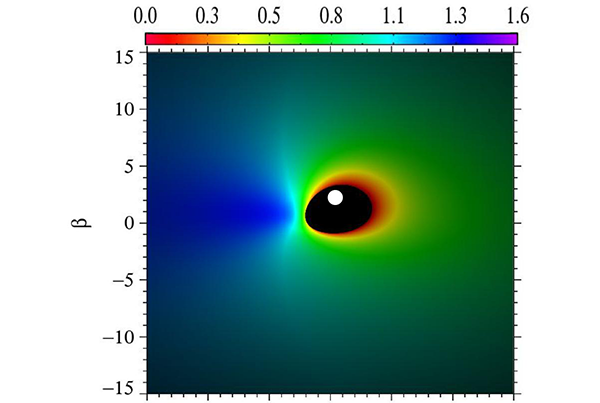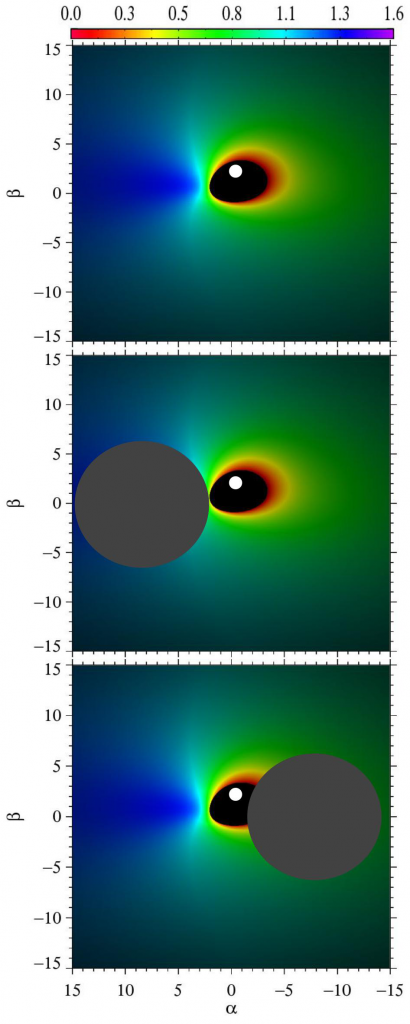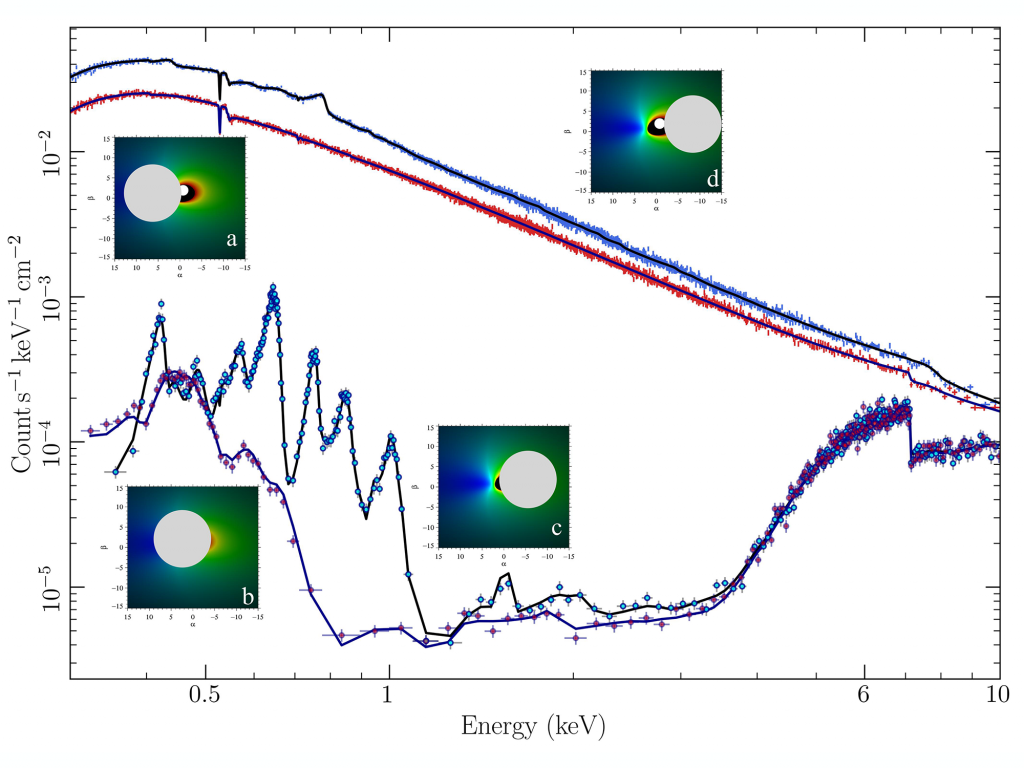
Date.
Active galactic nuclei (AGN) are bright compact regions located at the centres of some galaxies. These objects are powered by the accretion of gas, through a disc, onto a supermassive black hole (~105-109 Msun) . The accretion disc emits the bulk of its light in the ultraviolet/optical range. The disc photons will then be Compton up-scattered in the X-rays (meaning that the wavelength of the photons will increase) by a plasma of hot electrons, known as the X-ray corona. A part of those X-ray photons, which are emitted isotropically in the rest frame of the electrons, will reach the observer. The other part will illuminate back the disc, which will reprocess and re-emit those photons in the form of the so-called X-ray reflection spectrum. This spectrum is characterised by the presence of various fluorescent lines, notably the iron K? line (at ~6.4 keV), and a hard excess, known as the Compton hump, peaking at ~20-30 keV.
Several observational pieces of evidence confirmed the existence of a relativistically blurred reflection component arising from the accretion. For instance, X-ray spectroscopy has proven to be a powerful tool to identify the reflection features in AGN X-ray spectra, allowing us to probe the innermost regions of AGN. In fact, due to the proximity of the emitting material from the black hole, strong special and general relativity effects (such as light bending, relativistic smearing, and gravitational redshift) alter the emitted spectrum, leading to a highly non-axisymmetric emission from the disc. For example, as the disc rotates, the approaching (towards the observer) part of the disc will be more luminous and appear to be bluer than the receding part (as seen in Figure 1). This technique provided robust measures of black hole spins in bright AGN thanks to the high-quality broadband (0.3-80 keV) spectra provided by XMM-Newton and NuSTAR. In addition, several occultation events, associated with clouds in the broad-line region, have been reported in AGN.
In this context, as a cloud in the broad-line region passes through our line of sight, it will shade or uncover various parts (approaching or receding) of the disc (see Figure 1). This phenomenon is known as an X-ray eclipse, which is similar to planetary transits (when a planet passes in front of its host star, reducing its brightness by a small amount). Tracking the movement of the cloud, using the unprecedented high spectral resolution and large effective area of the X-IFU, will allow us, for the first time, to perform a “tomography” of the accretion disc in AGN. In other words, getting the spectra during different phases of the occultation event (Figure 2) will allow us to reconstruct the emission from the inner structure of the accretion flow and constrain its geometry. For example, if the cloud is shading the approaching (thus more luminous/bluer) part of the disc (spectra a/b in Figure 2), we will be getting the light from the receding part only. Thus, the observed spectrum will be fainter than the cases when the receding part of the disc is obscured (spectra c/d in Figure 2).
The study of eclipsing events with X-IFU will open new windows on accretion physics, by mapping the innermost regions of the discs that are in proximity to the central black hole in active galaxies.
For more information, please consider reading Kammoun et al., 2018, MNRAS, 480 (3), 3243.
By Elias Kammoun
X-IFU Calibration Team member




 Youtube
Youtube